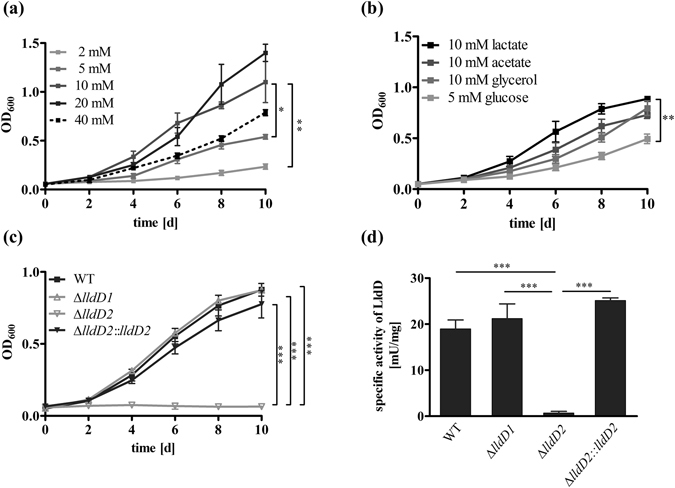Figure 1.

M. tuberculosis utilizes L-lactate as a carbon substrate for growth by oxidation via LldD2. (a) To identify the lactate concentration resulting in optimal growth of Mtb, lactate was offered in different amounts and the optical density was measured at the indicated time points. (b) To compare growth of Mtb on lactate and other carbon sources, Mtb H37Rv was grown for 10 days in the presence of lactate, acetate, glycerol, or glucose. Carbon substrates were supplied in equimolar amounts to compare their potential to induce growth of Mtb. (c) To determine the role of LldD1 and LldD2 in lactate utilization, the Mtb H37Rv wild type (black squares), the ∆lldD1 and ∆lldD2 mutant strains (grey triangles) and the complemented strain of ∆lldD2 (black triangles) were grown on lactate as sole carbon substrate. Optical density was measured at the indicated time points. (d) To determine the functionality of the LldD1 and LldD2 enzymes, the Mtb H37Rv wild type, the knock-out mutants, and the complemented strain ΔlldD2::lldD2 were grown in rich culture medium, and enzyme activity assays were performed with cell extracts using lactate as substrate. LldD activity was detected in the wild type, the ΔlldD1 mutant and in the ΔlldD2::lldD2, while LldD activity was abolished in the ΔlldD2 mutant. Data represent the mean of three independent experiments; error bars indicate the SEM.
